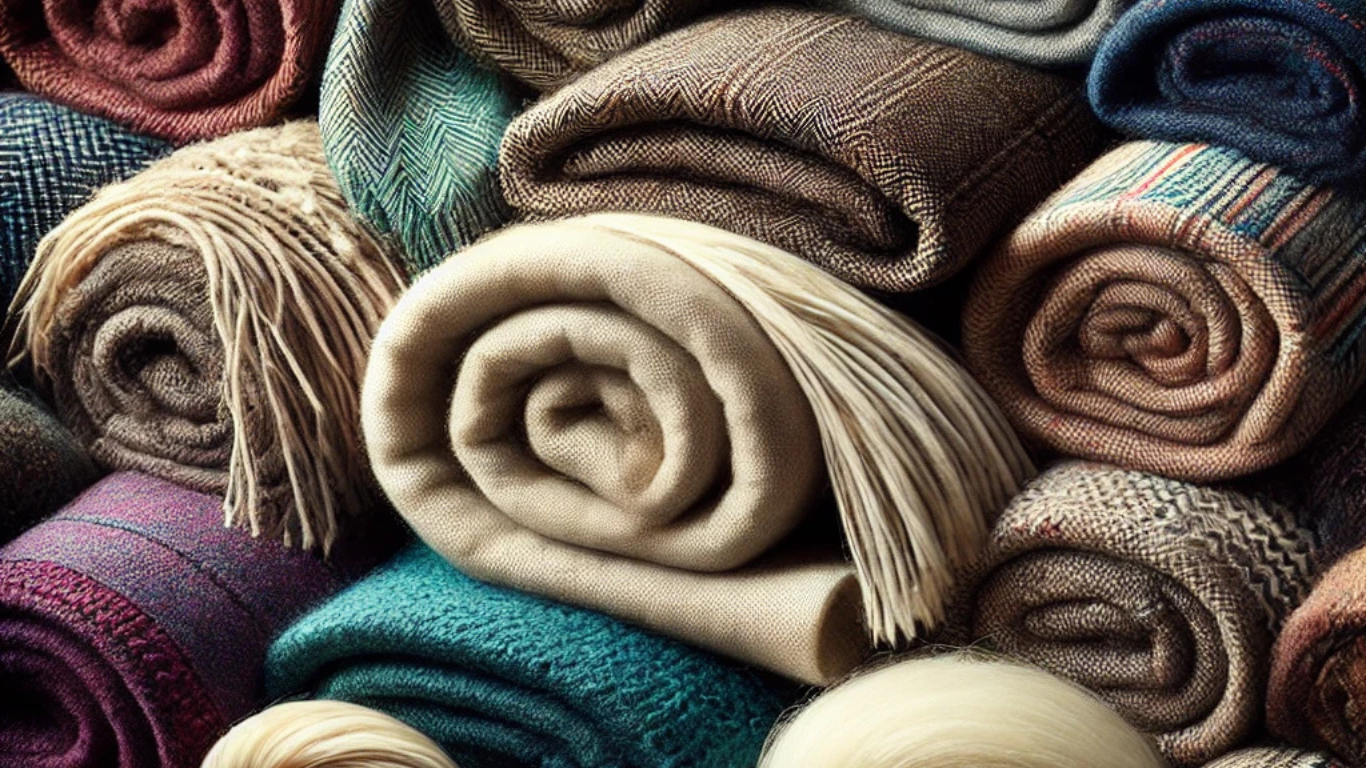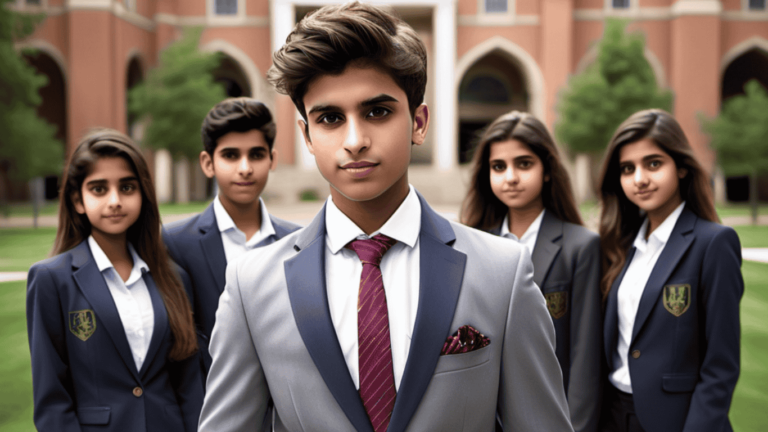🧵 Fabric Fascination: Unveiling Pakistan’s Blazer and Coat Treasures 🧥
Have you ever marvelled at the rich textures and intricate designs of Pakistani blazers and coats? From the bustling bazaars of Lahore to the chic boutiques of Karachi, these garments tell a story of craftsmanship and cultural heritage. But what makes Pakistani fabrics so unique and sought-after? Imagine wrapping yourself in a coat that not only keeps you warm but also carries centuries of tradition within its fibers. Whether you’re a fashion enthusiast or simply curious about global textile arts, our journey through the world of Pakistani blazer and coat fabrics promises to be an eye-opening experience. Get ready to explore the common materials, seasonal choices, and cutting-edge trends that define this vibrant corner of the fashion world. Let’s unravel the secrets behind these fabulous fabrics and discover why they’re capturing hearts worldwide!
Common Blazer and Coat Fabrics in Pakistan
A. Wool: The Classic Choice
Wool remains the gold standard for blazer and coat fabrics in Pakistan, offering unparalleled warmth and sophistication. Its natural insulating properties make it ideal for the cooler months, especially in northern regions. Pakistani wool fabrics often come in rich textures and vibrant colours, reflecting the country’s cultural heritage.
B. Cotton: Lightweight and Breathable
In Pakistan’s hot and humid climate, cotton blazers and coats are a popular choice. This natural fiber allows the skin to breathe, making it perfect for casual wear or formal occasions during warmer seasons. Pakistani cotton is known for its softness and durability, often featuring intricate weaves and patterns.
C. Linen: Perfect for Summer
Linen has gained popularity in recent years as a go-to fabric for summer blazers and lightweight coats in Pakistan. Its excellent moisture-wicking properties and ability to keep the wearer cool make it ideal for the country’s scorching summers. Pakistani linen often comes in pastel shades and is sometimes blended with cotton for added comfort.
D. Polyester Blends: Affordable and Durable
Polyester blends have found their place in the Pakistani market, offering an affordable alternative to natural fibers. These blends, often mixed with wool or cotton, provide durability and wrinkle resistance. They’re particularly popular for everyday wear and budget-friendly formal attire.
| Fabric | Best Season | Characteristics | Maintenance |
|---|---|---|---|
| Wool | Winter | Warm, elegant | Dry clean |
| Cotton | Spring/Fall | Breathable, soft | Machine wash |
| Linen | Summer | Cool, lightweight | Gentle wash |
| Polyester Blend | All seasons | Durable, affordable | Easy care |
Now that we’ve explored the common fabrics used in Pakistani blazers and coats, let’s delve into the unique characteristics that set these fabrics apart in the global market.
Unique Characteristics of Pakistani Fabrics
A. Rich Textures and Patterns
Pakistani fabrics are renowned for their intricate textures and captivating patterns. From the delicate embroidery of Phulkari to the bold geometric designs of Ajrak, these fabrics offer a tactile and visual feast. The textures range from smooth and silky to textured and embossed, providing a diverse selection for blazers and coats.
B. Vibrant Colour Palette
One of the most striking features of Pakistani fabrics is their vibrant colour palette. The use of rich, jewel-toned hues is prevalent, reflecting the country’s cultural heritage and artistic traditions. Here’s a comparison of common colour schemes:
| Traditional Colours | Modern Interpretations |
|---|---|
| Deep reds | Coral and salmon |
| Royal blues | Teal and turquoise |
| Emerald greens | Mint and sage |
| Golden yellows | Mustard and ochre |
C. Durability in Local Climate
Pakistani fabrics are expertly crafted to withstand the country’s diverse climate. Many fabrics are breathable yet sturdy, making them ideal for both blazers and coats. The natural fibers used in traditional weaving, such as cotton and silk, offer excellent moisture-wicking properties, ensuring comfort in humid conditions.
D. Traditional Weaving Techniques
The uniqueness of Pakistani fabrics lies in their traditional weaving techniques, passed down through generations. Some notable techniques include:
-
Khaddar: A hand-spun and hand-woven cotton fabric
-
Karandi: A blend of cotton and wool, perfect for winter wear
-
Jamawar: An intricate brocade weave, often used for formal attire
E. Fusion of Modern and Traditional Elements
Contemporary Pakistani fabrics often showcase a beautiful fusion of modern and traditional elements. This blend results in fabrics that are:
-
Versatile for various styles of blazers and coats
-
Appealing to both local and international markets
-
Adaptable to current fashion trends while maintaining cultural authenticity
Now that we’ve explored the unique characteristics of Pakistani fabrics, let’s delve into how these qualities influence seasonal fabric choices for blazers and coats.
Seasonal Fabric Choices
Now that we’ve explored the unique characteristics of Pakistani fabrics, let’s delve into the seasonal fabric choices for blazers and coats. Pakistan’s diverse climate demands a variety of fabrics to suit different weather conditions throughout the year.
A. Winter Fabrics: Warmth and Style
When the temperature drops, Pakistani tailors turn to fabrics that offer both insulation and elegance. Popular winter fabric choices include:
-
Wool
-
Tweed
-
Cashmere
-
Velvet
These materials not only provide warmth but also add a touch of sophistication to winter attire. Here’s a comparison of their properties:
| Fabric | Warmth | Durability | Texture |
|---|---|---|---|
| Wool | High | Excellent | Soft |
| Tweed | High | Very Good | Rough |
| Cashmere | Very High | Good | Luxurious |
| Velvet | Moderate | Good | Plush |
B. Summer Fabrics: Staying Cool and Fashionable
For the sweltering Pakistani summers, lightweight and breathable fabrics are essential. Popular choices include:
-
Cotton
-
Linen
-
Silk blends
-
Tropical wool
These fabrics allow air circulation and moisture wicking, keeping the wearer cool and comfortable even in formal settings.
C. Transitional Fabrics for Spring and Fall
During the milder seasons, versatile fabrics that can adapt to changing temperatures are ideal. Some excellent options are:
-
Cotton-wool blends
-
Light tweed
-
Gabardine
-
Lightweight flannel
These fabrics offer a balance between warmth and breathability, making them perfect for the unpredictable weather of spring and fall.
As we move forward, we’ll explore the tailoring techniques that bring out the best in these seasonal fabric choices, ensuring that Pakistani blazers and coats are not only fashionable but also functional throughout the year.
Tailoring Techniques for Pakistani Fabrics
Now that we’ve explored the unique characteristics of Pakistani fabrics, let’s delve into the tailoring techniques that bring these materials to life in blazers and coats.
A. Custom Fitting Processes
Pakistani tailors are renowned for their precision in custom fitting. They employ a combination of traditional and modern techniques to ensure a perfect fit:
-
Manual measurements
-
Digital body scanning
-
Multiple fittings
-
Draping techniques
B. Embellishment and Embroidery Options
Pakistani fabrics often feature intricate embellishments and embroidery, adding a touch of luxury to blazers and coats:
| Embellishment Type | Description | Common Usage |
|---|---|---|
| Zardozi | Gold thread embroidery | Collars, cuffs |
| Resham | Silk thread work | All-over patterns |
| Mirror work | Small mirrors sewn into fabric | Accent details |
| Sequins | Shiny discs for sparkle | Lapels, pockets |
C, Fabric Manipulation Techniques
Tailors in Pakistan employ various fabric manipulation techniques to create unique textures and patterns:
-
Pleating: Creating uniform folds for added volume
-
Smocking: Gathering fabric to create an elastic-like texture
-
Appliqué: Attaching decorative pieces of fabric to create designs
-
Quilting: Stitching layers of fabric together for warmth and texture
These tailoring techniques not only enhance the aesthetic appeal of blazers and coats but also showcase the rich craftsmanship inherent in Pakistani fabric traditions. As we move forward, we’ll explore how to properly care for these intricately crafted garments to ensure their longevity.

Caring for Pakistani Blazer and Coat Fabrics
Now that we’ve explored the unique characteristics and tailoring techniques of Pakistani blazer and coat fabrics, let’s delve into the essential care practices to ensure your garments maintain their quality and longevity.
A. Proper Cleaning Methods
The cleaning method for your Pakistani blazer or coat depends on the fabric type:
-
Wool and wool blends: Dry clean only to prevent shrinkage and maintain shape
-
Cotton and linen: Machine washable on gentle cycle with cold water
-
Silk: Hand wash or dry clean to preserve the delicate fibers
| Fabric Type | Recommended Cleaning Method |
|---|---|
| Wool | Dry clean only |
| Cotton | Machine wash, gentle cycle |
| Silk | Hand wash or dry clean |
B. Storage Tips for Longevity
Proper storage is crucial for maintaining the quality of your blazers and coats:
-
Use padded hangers to preserve shape
-
Button up garments before hanging
-
Store in breathable garment bags
-
Keep away from direct sunlight to prevent fading
-
Use cedar blocks or lavender sachets to repel moths
C. Maintenance to Preserve Quality
Regular maintenance will help your Pakistani blazers and coats look their best:
-
Brush fabrics gently after each wear to remove dust and debris
-
Steam or press garments as needed, following fabric-specific guidelines
-
Address stains promptly to prevent setting
-
Rotate your garments to prevent excessive wear in specific areas
By following these care instructions, you’ll ensure that your Pakistani blazers and coats remain in excellent condition for years to come. Next, we’ll explore the current trends in Pakistani blazer and coat fabrics to keep your wardrobe up-to-date.
Trends in Pakistani Blazer and Coat Fabrics
A. Emerging Fabric Blends
Pakistani fashion is embracing innovative fabric blends that combine the best of traditional and modern textiles. These new combinations offer enhanced comfort, durability, and style. Here’s a look at some popular emerging blends:
| Blend | Composition | Benefits |
|---|---|---|
| Cotton-Polyester | 60% Cotton, 40% Polyester | Breathable, wrinkle-resistant |
| Wool-Lycra | 95% Wool, 5% Lycra | Stretch, shape retention |
| Linen-Silk | 70% Linen, 30% Silk | Lightweight, luxurious feel |
B. Eco-Friendly Fabric Options
Sustainability is becoming increasingly important in Pakistani fashion. Designers are now incorporating eco-friendly fabrics into their blazer and coat collections:
-
Organic cotton
-
Recycled polyester
-
Tencel (made from wood pulp)
-
Hemp blends
These materials not only reduce environmental impact but also offer unique textures and finishes that appeal to eco-conscious consumers.
C. Influence of Global Fashion on Local Fabrics
Global fashion trends are inspiring Pakistani fabric manufacturers to experiment with new textures and finishes. We’re seeing:
-
Metallic thread embellishments
-
Jacquard weaves with intricate patterns
-
Performance fabrics with moisture-wicking properties
-
Ultra-soft finishes on traditional wool fabrics
These innovations are helping Pakistani blazers and coats compete on the international fashion stage.
D. Revival of Traditional Fabrics in Modern Designs
There’s a growing trend of incorporating traditional Pakistani fabrics into contemporary blazer and coat designs. This fusion approach celebrates cultural heritage while appealing to modern tastes. Some examples include:
-
Khaddar-blend blazers with minimalist cuts
-
Pashmina-infused coats with asymmetrical hemlines
-
Karandi fabric used in structured, tailored jackets
This trend not only preserves traditional craftsmanship but also creates unique, globally appealing pieces that stand out in the fashion world.
Pakistani blazer and coat fabrics offer a rich tapestry of options, from traditional wool and cotton blends to modern synthetic materials. Each fabric boasts unique characteristics that cater to the country’s diverse climate and style preferences. Whether choosing lightweight fabrics for summer or heavier materials for winter, understanding the properties of these fabrics is crucial for making informed decisions.
The art of tailoring Pakistani fabrics, combined with proper care techniques, ensures that blazers and coats maintain their quality and appearance. As fashion trends evolve, so do the choices in fabrics and styles, reflecting a blend of cultural heritage and contemporary design. By exploring the world of Pakistani blazer and coat fabrics, one can appreciate the craftsmanship and versatility that define the country’s textile industry.




